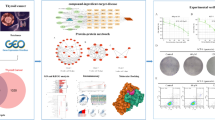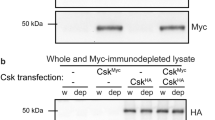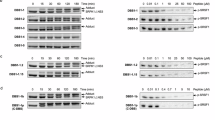Abstract
Aim:
Sulfated polymannuroguluronate (SPMG), a candidate anti-AIDS drug, inhibited HIV replication and interfered with HIV entry into host T lymphocytes. SPMG has high binding affinity for the transactivating factor of the HIV-1 virus (Tat) via its basic domain. However, deletion or substitution of the basic domain affected, but did not completely eliminated Tat-SPMG interactions. Here, we sought to identify other SPMG binding sites in addition to the basic domain.
Methods:
The potential SPMG binding sites were determined using molecular simulation and a surface plasmon resonance (SPR) based competitive inhibition assay. The effect of SPMG on Tat induced adhesion was evaluated using a cell adhesion assay.
Results:
The KKR domain, a novel high-affinity heparin binding site, was identified, which consisted of a triad of Lys12, Lys41, and Arg78. The KKR domain, spatially enclosed SPMG binding site on Tat, functions as another binding domain for SPMG. Further functional evaluation demonstrated that SPMG inhibits Tat-mediated SLK cell adhesion by directly binding to the KKR region.
Conclusion:
The KKR domain is a novel high-affinity binding domain for SPMG. Our findings provide important new insights into the molecular mechanisms of SPMG and a potential therapeutic intervention for Tat-induced cell adhesion.
Similar content being viewed by others
Log in or create a free account to read this content
Gain free access to this article, as well as selected content from this journal and more on nature.com
or
References
Dezube BJ . Management of AIDS-related Kaposi's sarcoma: advances in target discovery and treatment. Expert Rev Anticancer Ther 2002; 2: 193–200.
Aversa SM, Cattelan AM, Salvagno L, Crivellari G, Banna G, Trevenzoli M, et al. Treatments of AIDS-related Kaposi's sarcoma. Crit Rev Oncol Hematol 2005; 53: 253–65.
Sullivan RJ, Pantanowitz L, Dezube BJ . Targeted therapy for Kaposi sarcoma. BioDrugs 2009; 23: 69–75.
Aoki Y, Tosato G . HIV-1 Tat enhances Kaposi sarcoma-associated herpesvirus (KSHV) infectivity. Blood 2004; 104: 810–4.
Pati S, Foulke JS Jr, Barabitskaya O, Kim J, Nair BC, Hone D, et al. Human herpesvirus 8-encoded vGPCR activates nuclear factor of activated T cells and collaborates with human immunodeficiency virus type 1 Tat. J Virol 2003; 77: 5759–73.
Barillari G, Sgadari C, Fiorelli V, Samaniego F, Colombini S, Manzari V, et al. The Tat protein of human immunodeficiency virus type-1 promotes vascular cell growth and locomotion by engaging the alpha5beta1 and alphavbeta3 integrins and by mobilizing sequestered basic fibroblast growth factor. Blood 1999; 94: 663–72.
Rusnati M, Presta M . HIV-1 Tat protein and endothelium: from protein/cell interaction to AIDS-associated pathologies. Angiogenesis 2002; 5: 141–51.
Ziegler A, Seelig J . Interaction of the protein transduction domain of HIV-1 TAT with heparan sulfate: binding mechanism and thermodynamic parameters. Biophys J 2004; 86: 254–63.
Rusnati M, Coltrini D, Oreste P, Zoppetti G, Albini A, Noonan D, et al. Interaction of HIV-1 Tat protein with heparin. Role of the backbone structure, sulfation, and size. J Biol Chem 1997; 272: 11313–20.
Rusnati M, Tulipano G, Spillmann D, Tanghetti E, Oreste P, Zoppetti G, et al. Multiple interactions of HIV-I Tat protein with size-defined heparin oligosaccharides. J Biol Chem 1999; 274: 28198–205.
Rusnati M, Tulipano G, Urbinati C, Tanghetti E, Giuliani R, Giacca M, et al. The basic domain in HIV-1 Tat protein as a target for polysulfonated heparin-mimicking extracellular Tat antagonists. J Biol Chem 1998; 273: 16027–37.
Tyagi M, Rusnati M, Presta M, Giacca M . Internalization of HIV-1 tat requires cell surface heparan sulfate proteoglycans. J Biol Chem 2001; 276: 3254–61.
Fittipaldi A, Giacca M . Transcellular protein transduction using the Tat protein of HIV-1. Adv Drug Deliv Rev 2005; 57: 597–608.
Ai J, Xin X, Zheng M, Wang S, Peng S, Li J, et al. A triad of Lys12, Lys41, Arg78 spatial domain, a novel identified heparin binding site on Tat protein, facilitates Tat-driven cell adhesion. PLoS One 2008; 3: e2662.
Rusnati M, Urbinati C, Caputo A, Possati L, Lortat-Jacob H, Giacca M, et al. Pentosan polysulfate as an inhibitor of extracellular HIV-1 Tat. J Biol Chem 2001; 276: 22420–5.
Hui B, Xia W, Li J, Wang L, Ai J, Geng M . Sulfated polymannuroguluronate, a novel anti-acquired immune deficiency syndrome drug candidate, blocks neuroinflammatory signalling by targeting the transactivator of transcription (Tat) protein. J Neurochem 2006; 97: 334–44.
Lu CX, Li J, Sun YX, Qi X, Wang QJ, Xin XL, et al. Sulfated polymannuroguluronate, a novel anti-AIDS drug candidate, inhibits HIV-1 Tat-induced angiogenesis in Kaposi's sarcoma cells. Biochem Pharmacol 2007; 74: 1330–9.
Peloponese JM Jr, Gregoire C, Opi S, Esquieu D, Sturgis J, Lebrun E, et al. 1H-13C nuclear magnetic resonance assignment and structural characterization of HIV-1 Tat protein. C R Acad Sci III 2000; 323: 883–94.
Sali A . Comparative protein modeling by satisfaction of spatial restraints. Mol Med Today 1995; 1: 270–7.
Trott O, Olson AJ . AutoDock Vina: improving the speed and accuracy of docking with a new scoring function, efficient optimization, and multithreading. J Comput Chem 2010; 31: 455–61.
DeLano WL . The PyMOL Molecular Graphics System. 2002. Available from: http://www.pymol.org.
Li FC, Qi X, Geng MY . A novel method of Immobilization of 911 for surface plasmon resonance biosensor. Chin J Anal Chem 2003; 31: 266–9.
Liu H, Geng M, Xin X, Li F, Zhang Z, Li J, et al. Multiple and multivalent interactions of novel anti-AIDS drug candidates, sulfated polymannuronate (SPMG)-derived oligosaccharides, with gp120 and their anti-HIV activities. Glycobiology 2005; 15: 501–10.
Hutchings H, Ortega N, Plouet J . Extracellular matrix-bound vascular endothelial growth factor promotes endothelial cell adhesion, migration, and survival through integrin ligation. FASEB J 2003; 17: 1520–2.
Mulloy B . The specificity of interactions between proteins and sulfated polysaccharides. An Acad Bras Cienc 2005; 77: 651–64.
Katsuraya K, Nakashima H, Yamamoto N, Uryu T . Synthesis of sulfated oligosaccharide glycosides having high anti-HIV activity and the relationship between activity and chemical structure. Carbohydr Res 1999; 315: 234–42.
Capila I, Linhardt RJ . Heparin-protein interactions. Angew Chem Int Ed Engl 2002; 41: 391–412.
Hileman RE, Fromm JR, Weiler JM, Linhardt RJ . Glycosaminoglycan-protein interactions: definition of consensus sites in glycosaminoglycan binding proteins. Bioessays 1998; 20: 156–67.
Munoz EM, Linhardt RJ . Heparin-binding domains in vascular biology. Arterioscler Thromb Vasc Biol 2004; 24: 1549–57.
Acknowledgements
This work was supported by the National Natural Science Foundation of China (No 30772884).
Author information
Authors and Affiliations
Corresponding authors
Rights and permissions
About this article
Cite this article
Wu, Yl., Ai, J., Zhao, Jm. et al. Sulfated polymannuroguluronate inhibits Tat-induced SLK cell adhesion via a novel binding site, a KKR spatial triad. Acta Pharmacol Sin 32, 647–654 (2011). https://doi.org/10.1038/aps.2011.2
Received:
Accepted:
Published:
Issue date:
DOI: https://doi.org/10.1038/aps.2011.2



